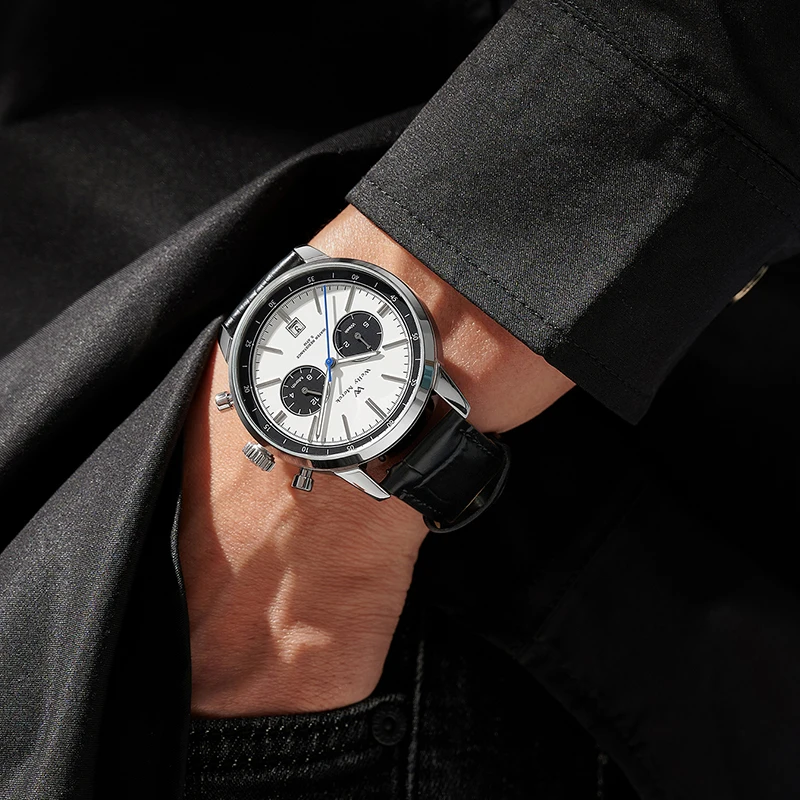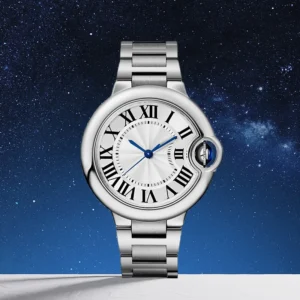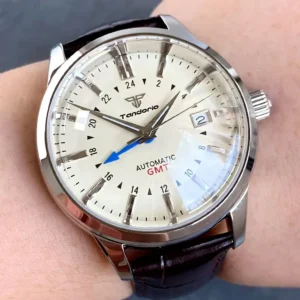The Evolution of Wristwatches: From Classic to Minimalist
The journey of timepieces from pocket to wrist marks one of the most significant transformations in horological history. As pocket watches made their transition to the wrist in the early 20th century, they carried with them elements of traditional craftsmanship while gradually adapting to new demands of practicality and style. This evolution gave birth to two distinct design philosophies that continue to define luxury timepieces today.
Classic dress watches emerged as the first wristwatch standard, maintaining the elegant restraint and refined detailing of their pocket watch ancestors. These timepieces celebrated the art of watchmaking through thoughtful decoration balanced with formal restraint. In contrast, minimalist watches developed as a more contemporary response, embracing the principle that beauty lies in simplicity and functional purity.
Both approaches to classic vs minimalist dress watches represent different interpretations of elegance—one honoring tradition and the meticulous display of craftsmanship, the other finding sophistication in restraint and essential form. The design evolution of formal watch styles reflects changing aesthetics across decades of fashion and cultural shifts.
This article explores the distinctive characteristics, appropriate contexts, and aesthetic merits of both styles to help you determine which best expresses your personal definition of wrist elegance.
Defining the Classic Dress Watch: Elements of Timeless Elegance
Classic dress watches embody horological tradition through a set of established design elements that have remained largely unchanged for generations. These timepieces are defined by their elegant restraint and refined proportions, creating an instantly recognizable profile that communicates sophistication.
The defining characteristics of a classic dress watch include:
- Refined Proportions: Typically featuring a slim profile (7-9 mm thick) and modest diameter (36-40 mm) that allows the watch to slip discreetly beneath a shirt cuff
- Clean Dial Design: Usually white, silver, cream, or black with minimal text and balanced visual elements
- Traditional Indices: Roman numerals, applied hour markers, or simple indices that maintain formal elegance
- Limited Complications: Often displaying just hours, minutes, and sometimes seconds, occasionally including a date window
- Premium Materials: Cases crafted from precious metals like gold or high-quality stainless steel with polished finishes
- Leather Strapping: Typically paired with alligator, crocodile, or fine calfskin straps in black or brown
The philosophy behind classic dress watch design emphasizes restraint within formal parameters. These timepieces don’t seek attention through size or flash but rather through perfect proportions and thoughtful details that reward closer inspection.
Classic dress watches maintain strong connections to formal attire and occasions, designed to complement rather than compete with one’s wardrobe. The classic automatic dress watches in Sharp Aspect’s collection exemplify these timeless design principles, offering refined elegance for formal environments.
Iconic Examples of Classic Dress Watches
The world of classic dress watches features numerous iconic designs that perfectly embody traditional elegance. These timepieces have not only defined the category but have also influenced generations of watchmaking.
Among the most representative examples are watches with perfectly balanced dials featuring applied gold hour markers or Roman numerals against pristine white or silver backgrounds. The hands on these watches typically feature dauphine or leaf styles, meticulously polished to create a play of light that catches the eye without overwhelming it.
Case shapes in classic dress watches tend toward perfect circles with minimal embellishment, allowing the overall harmony of proportions to speak for itself. The lugs curve gently to embrace the wrist, while the crown remains proportionally sized and unobtrusive.
Many of the finest automatic dress watches feature exhibition casebacks that reveal beautifully finished movements with Geneva stripes, perlage, and blued screws—a reminder that classic elegance extends beyond what’s immediately visible to the tradition of craftsmanship beneath.
Understanding Minimalist Watch Design Philosophy
Where classic dress watches celebrate horological tradition, minimalist watches embrace reduction as an art form. The core philosophy of “less is more” drives every aspect of minimalist watch design, creating timepieces that achieve distinction through careful elimination rather than addition.
The minimalist approach to watchmaking draws significant inspiration from the Bauhaus movement, which revolutionized design in the early 20th century by emphasizing function, clean lines, and the removal of unnecessary ornamentation. This influence manifests in watches that treat time-telling as both a practical function and an aesthetic experience centered on visual clarity.
The elegance of minimalist dress watch design lies in understanding exactly what elements are essential and executing them with perfect restraint. Unlike simple watches that might merely lack decoration, truly minimalist designs achieve a delicate balance where removing any additional element would compromise function, and adding anything would disrupt the visual harmony.
Minimalist watches celebrate negative space, treating the empty areas of the dial as intentional design elements rather than canvas to be filled. This approach creates timepieces with remarkable visual impact despite—or rather because of—their restraint.
Key Characteristics of Minimalist Watches
Minimalist watches achieve their distinctive aesthetic through a specific set of design characteristics that prioritize visual clarity and essential function:
- Ultra-Clean Dials: Featuring little to no text beyond the essential brand name, with expanses of negative space that create visual breathing room
- Simple Markers: Typically using line indices or dots instead of numerals, often with identical markers for all hour positions
- Reduced Color Palette: Usually limiting colors to two or three at most, commonly employing monochromatic schemes
- Thin, Geometric Hands: Straight lines or simple needle hands without elaborate shapes or decorative elements
- Slim Cases: Typically 6-8 mm in thickness, with clean lines and minimal transitions between surfaces
- Material Simplicity: Predominantly stainless steel, often with brushed or matte finishes to avoid visual distraction
- Versatile Straps: Including leather, mesh, fabric, or link bracelets with straightforward designs
The typography found on minimalist watches deserves special attention, as it often employs sans-serif fonts with consistent stroke weights that echo the overall design philosophy. Even the spacing between elements receives careful consideration, with balanced proportions that create a sense of visual harmony.
Sharp Aspect’s collection of minimalist automatic watches demonstrates how these principles can be applied to create timepieces that communicate sophistication through their very simplicity.
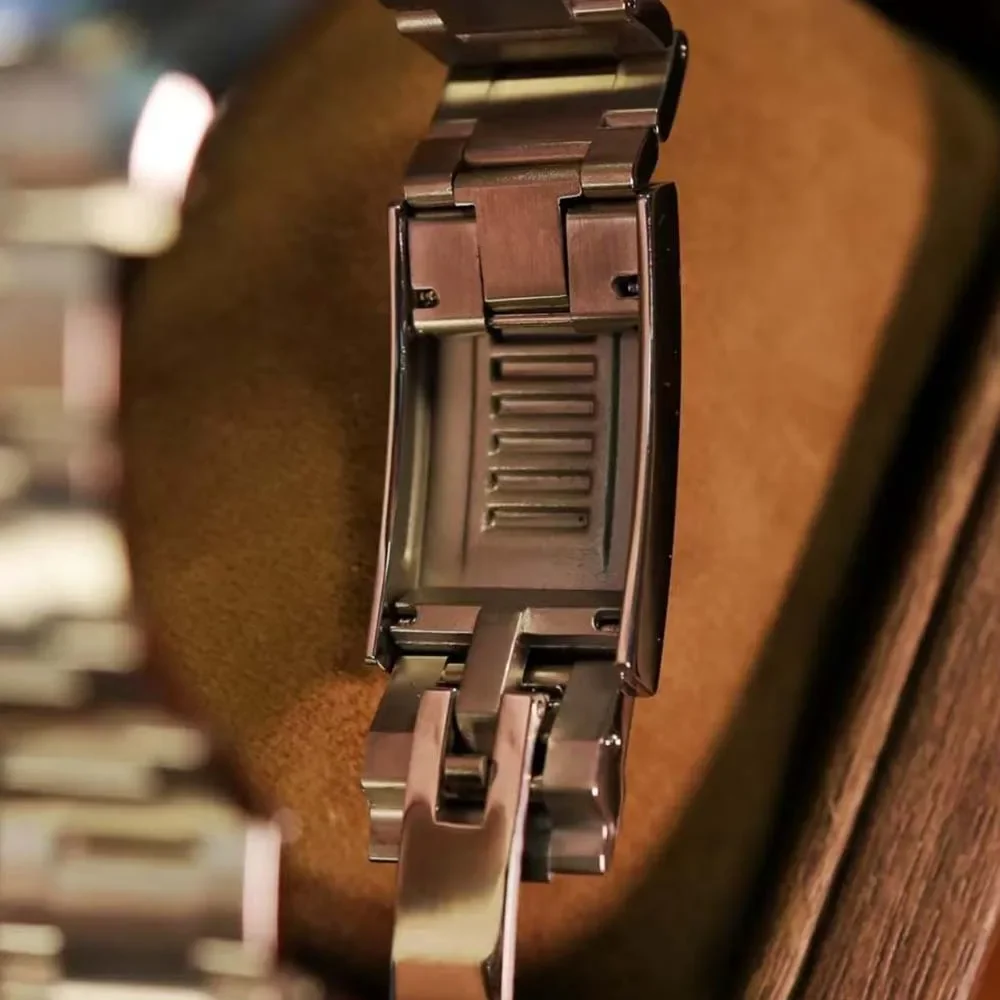
Notable Minimalist Watch Brands and Models
The minimalist watch landscape features diverse interpretations of the “less is more” philosophy, ranging from heritage manufacturers who have embraced cleaner designs to modern brands built entirely around minimalist principles.
Some watchmakers approach minimalism through perfectly circular cases with nearly invisible bezels that maximize dial space, creating an almost floating appearance of the time display. The dials themselves feature index markers of identical length, removing the traditional emphasis on quarter-hour positions for a more democratic visual rhythm.
Other interpretations feature slightly more distinctive elements while maintaining minimalist principles—perhaps a single accent color for the second hand, or subtle texture on an otherwise clean dial. Some incorporate date complications through perfectly integrated windows that maintain the overall balance.
The definitive guide to minimalist dress watches reveals how different brands interpret minimalism through their unique design languages, from those focusing on geometric purity to those exploring the minimal expression of mechanical complexity.
Head-to-Head Comparison: Classic vs. Minimalist
When comparing classic dress watches and minimalist styles, several key differences emerge across design elements, versatility, and overall aesthetic impact:
| Feature | Classic Dress Watch | Minimalist Watch |
|---|---|---|
| Dial Design | Roman numerals or applied indices with multiple scales | Simple stick indices or dots with minimal text |
| Case Profile | Traditional proportions (36-40mm) with defined bezels | Often thinner bezels with case sizes from 36-42mm |
| Hands | Dauphine, leaf, or other traditional styles | Simple stick or needle designs |
| Materials | Often precious metals or high-polish steel | Predominantly stainless steel, sometimes with matte finish |
| Complications | Limited but may include date, small seconds | Typically time-only or with highly integrated complications |
| Strap/Bracelet | Predominantly leather, especially alligator | Wide variety: leather, mesh, fabric, link bracelets |
| Visual Impact | Formal elegance with nods to watchmaking heritage | Contemporary minimalism emphasizing clean design |
| Versatility | Excels in formal settings, more limited in casual contexts | Adapts well across dress codes, especially contemporary settings |
Classic dress watches project an unmistakable air of tradition and formal elegance. Their design language speaks of established luxury codes and offers visual cues that connect to horological history. These timepieces tend to present more detail upon close inspection, rewarding the observer with fine finishing and subtle decorative elements.
In contrast, minimalist watches project contemporary sophistication through their restraint. The visual guide to dress watch styles shows how minimalist designs often appear larger than their dimensions suggest due to their expansive dials and thin bezels, creating a distinctly modern presence on the wrist.

Matching Watch Style to Occasion and Attire
The choice between classic and minimalist watch styles should consider the settings where you’ll wear your timepiece and how it will complement your wardrobe.
Classic dress watches excel in traditional formal environments. Their refined proportions and established design language make them natural companions for business formal attire, black-tie events, and important professional meetings. These watches communicate respect for tradition and attention to detail, pairing perfectly with suits, French cuff shirts, and formal eveningwear.
Minimalist watches offer greater versatility across dress codes. They transition seamlessly between business casual environments, creative professional settings, and smart casual occasions. Their clean aesthetic complements both tailored clothing and more relaxed contemporary attire, making them excellent daily wear options for modern professionals.
The classic and minimalist watch styling guide offers specific pairing recommendations:
- Classic dress watches enhance traditional suits, particularly those with peak lapels or formal details
- Minimalist designs complement unstructured blazers, knit ties, and contemporary tailoring
- Thin dress watches of either style can work with French cuff shirts, though classic styles typically look more harmonious
- Minimalist watches pair exceptionally well with monochromatic outfits and Scandinavian-inspired fashion
For those seeking versatile options that work across multiple settings, thin automatic dress watches offer elegant profiles that can adapt to various occasions while maintaining a sophisticated presence.
Bridging the Gap: Hybrid Designs
While we’ve explored the distinct characteristics of classic and minimalist watch styles, the boundaries between these categories have increasingly blurred as watchmakers create designs that thoughtfully combine elements from both traditions.
These hybrid approaches might feature traditional case shapes and proportions but pair them with cleaner dials lacking numerals. Others might maintain classic dial layouts but execute them with minimalist typography and reduced detailing. Some models feature traditional hands on otherwise minimalist faces, creating an interesting dialogue between horological history and contemporary restraint.
The spectrum of design between purely classic and strictly minimalist offers intriguing options for those who appreciate aspects of both aesthetics. Understanding the defining characteristics of classic dress watches helps identify how these hybrid models selectively incorporate traditional elements while maintaining contemporary appeal.
Many contemporary watchmakers have found success by reinterpreting classic proportions through a minimalist lens, creating timepieces that honor tradition without feeling constrained by it. These watches often serve as excellent “bridge pieces” in a collection, complementing both vintage-inspired and ultra-modern designs.
Factors to Consider When Choosing Your Style
Selecting between classic and minimalist watch styles requires thoughtful consideration of several personal factors:
Personal Style Alignment: Consider your existing wardrobe and whether you gravitate toward traditional or contemporary fashion. Classic watches naturally complement traditional menswear, while minimalist designs pair well with modern, clean-lined clothing.
Professional Environment: Assess the formality of your work setting. Traditional business and legal environments often align better with classic dress watches, while creative fields and tech companies may appreciate minimalist designs.
Existing Collection: If you’re building a watch collection, consider how a new acquisition would complement pieces you already own. Variety often creates a more versatile collection than multiple similar styles.
Wrist Size: Classic dress watches typically appear more proportional on smaller to medium wrists, while minimalist designs with their cleaner dials can work well across various wrist sizes.
Long-term Perspective: Consider whether you prefer designs with proven longevity (classic) or appreciate more contemporary aesthetics that feel current (minimalist).
The comparison of minimalist vs classic dress watches suggests that many enthusiasts eventually appreciate both styles for their different strengths, often starting with the style that best matches their current lifestyle before expanding their collection.
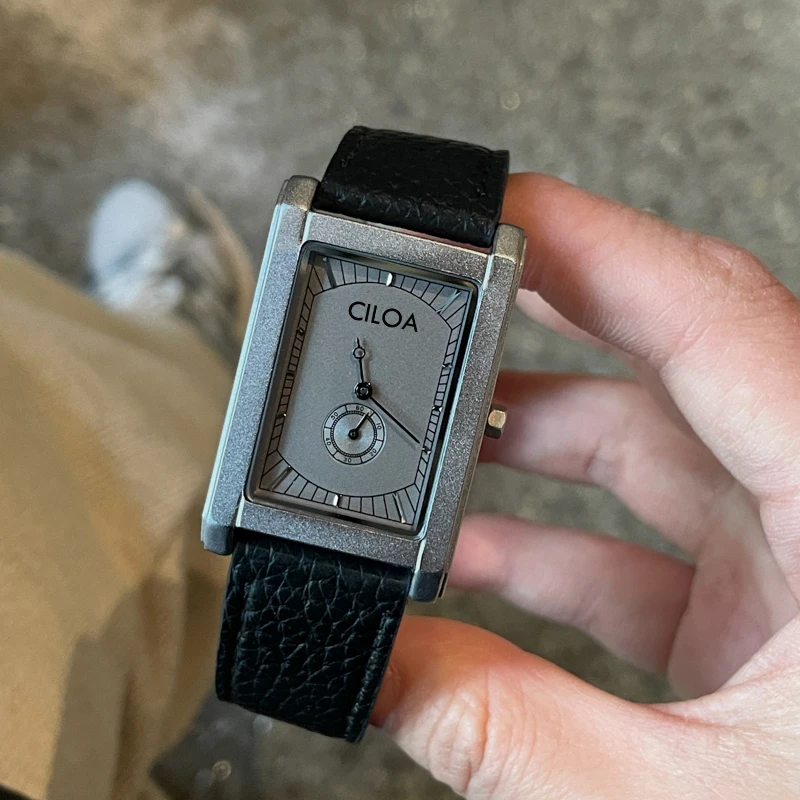
Classic Automatic Dress Watches, Day Date Automatic Watches, Perpetual Calendar Automatic Watches
Price range: $540.60 through $574.60 Select options This product has multiple variants. The options may be chosen on the product pageClassic Automatic Dress Watches, GMT Automatic Watches, GMT Pilot Watches
Price range: $1,240.86 through $1,463.33 Select options This product has multiple variants. The options may be chosen on the product pageClassic Automatic Dress Watches, Thin Automatic Dress Watches
$437.64 Select options This product has multiple variants. The options may be chosen on the product pageClassic Automatic Dress Watches, GMT Automatic Watches, GMT Dive Watches
Price range: $468.93 through $552.94 Select options This product has multiple variants. The options may be chosen on the product pageClassic Automatic Dress Watches, Minimalist Automatic Watches
$209.38 Select options This product has multiple variants. The options may be chosen on the product pageSquare & Rectangular Automatic Watches
Price range: $127.56 through $134.64 Select options This product has multiple variants. The options may be chosen on the product page
Frequently Asked Questions About Watch Styles
Can minimalist watches be appropriate for formal events?
Yes, particularly those with slim profiles and high-quality materials. While classic dress watches remain the traditional choice, contemporary formal events often welcome the understated elegance of minimalist designs, especially when crafted from premium materials with excellent finishing.
Are classic dress watches considered outdated?
Not at all. Classic dress watches represent timeless design rather than dated fashion. Their enduring aesthetic continues to be appropriate for formal settings and professional environments, especially those that value tradition.
Which style tends to retain value better?
Both styles can maintain value when produced by respected manufacturers with quality movements. Classic designs from established luxury brands often have proven records of value retention, while exceptional minimalist pieces from respected makers can also hold value, particularly limited editions.
What size watch works best for smaller wrists?
For wrists under 6.5 inches (16.5 cm), watches between 36-38mm diameter typically offer the most proportional look regardless of style. Classic dress watches traditionally run smaller (34-38mm), potentially offering better proportion for smaller wrists.
Can I wear a dress watch with casual attire?
Absolutely. While classic dress watches traditionally pair with formal wear, both styles can work with casual clothing when thoughtfully matched. Minimalist designs typically transition to casual settings more seamlessly, while classic dress watches add a touch of refinement to simple attire.
Understanding the various watch features helps in selecting the timepiece that best matches both your aesthetic preferences and practical needs.
Care and Maintenance Differences
Both classic and minimalist watches benefit from proper care, though their design differences can influence maintenance approaches.
Classic dress watches often feature leather straps requiring regular conditioning to prevent cracking, particularly if the watch is worn frequently. Keep leather straps away from water and apply leather conditioner every few months. The polished cases typical of classic watches show scratches more readily than brushed finishes, requiring more careful handling to maintain their pristine appearance.
Minimalist watches with stainless steel cases or bracelets generally prove more resilient to daily wear. Brushed finishes hide minor scratches better than polished surfaces. For watches with mesh bracelets, occasional cleaning with a soft brush removes accumulated debris from between the links.
Both styles, when equipped with automatic movements, benefit from regular winding if not worn daily. Consider a watch winder for automatic watches that aren’t in regular rotation. For those interested in rectangular case shapes, the square and rectangular automatic watches collection offers distinctive options that can feature either classic or minimalist design elements.
The Future of Watch Design: Evolution of Both Styles
Watch design continues to evolve while respecting the distinct traditions of both classic and minimalist approaches. Current trends show classic dress watches subtly expanding their traditional dimensions, with case sizes now commonly reaching 38-40mm while maintaining their characteristic elegance. Many traditional manufacturers are experimenting with dial colors beyond conventional silver and white, introducing deep blues and even subtle gradients while keeping classical proportions.
Minimalist watch design has embraced new materials and finishing techniques, with sandblasted cases, ceramic components, and monochromatic color schemes creating new expressions of the less-is-more philosophy. Some brands have introduced innovative display methods that maintain minimalist principles while offering additional functionality.
The influence of technology appears in both categories, with traditional watchmakers incorporating modern materials for improved performance while maintaining classic aesthetics. Similarly, minimalist designs increasingly feature advanced movements visible through exhibition casebacks, creating an interesting contrast between simple exteriors and complex interiors.
The definitive guide to dress watch design explores how these traditions continue to develop while maintaining their essential character. As personal style increasingly blends formal and casual elements, watches that can bridge multiple contexts—whether through classic versatility or minimalist adaptability—will likely continue gaining prominence.
Ultimately, both classic and minimalist approaches to watch design represent valid expressions of horological elegance, offering different but equally sophisticated paths to elevating your personal style through the art of watchmaking.

